A foot massage can be performed for relaxation purposes but, more often than not, it represents a great form of treatment for those who suffer from plantar fasciitis. Representing the most common cause of heel pain, this condition can have a negative impact on the overall quality of life – this has to do with the fact that it can prevent one from bearing weight on the affected foot. As you will have the opportunity to read below, foot massages can improve the symptomatology experienced by the patient. Used alongside other forms of therapy, they can help the patient return to the normal activities of daily living.
Transverse Frictional Massage
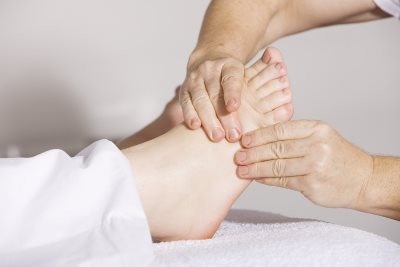
According to a study published in International Musculoskeletal Medicine, the transverse frictional massage represents a suitable form of therapy for those who suffer from plantar fasciitis. The study compared the benefits of using this form of therapy in combination with a home exercise program, versus resorting exclusively to the exercise program. It was revealed that the transverse frictional massage could greatly improve the symptomatology of plantar fasciitis, especially when it came to pain. Moreover, as the symptomatology improved, so did the overall level of functionality for the patient benefitting from the massage.
The transverse frictional massage is a particular form of foot massage, working to release the tension accumulated at the level of the soft tissues (connective tissue massage). Manual pressure is used to apply frictions at the level of the plantar fascia (point of origin); repetitive, back-and-forth motions are used, the main idea being to stretch the affected structure in an efficient manner (mechanical stretching). The best position for this massage is the one of half-lying; also, it can help to dorsiflex the big toe, as this guarantees the maximum amount of stretching at the level of the plantar fascia.
Massage, Stretching & Strengthening
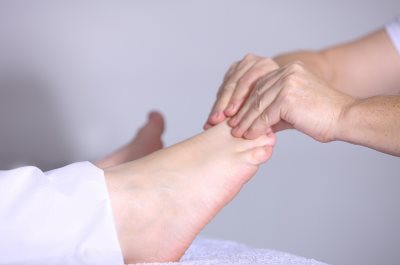
As a study published in the World Applied Sciences Journal has demonstrated, the combination of massage therapy, stretching and strengthening exercises delivers the best results for those who suffer from plantar heel pain (due to plantar fasciitis). Patients who benefitted from all these three forms of therapy presented a significant improvement, with regard to pain and levels of foot function activity. The soft tissue massage is presented as a highly-efficient conservative treatment, alongside the wearing of night splints and orthotics, stretching and strengthening exercises.
According to the authors of the study, the massage performed at the level of the plantar fascia can eliminate the accumulated tension and improve overall functionality. Moreover, it has an active effect on the deep muscles surrounding the plantar fascia and it prevents the formation of adherences (scar tissue which may impair the functionality of the plantar fascia, making the symptomatology even worse).
Myofascial Release
Myofascial release is also presented as an alternative to the classic form of massage, having a positive effect on the tensed soft tissues. The combination of classic massage therapy and myofascial release has proven out to be especially beneficial for those who suffer from chronic plantar fasciitis. Interestingly enough, the myofascial release technique can actually stimulate the production of collagen and, thus, contribute to the healing of the plantar fascia. The degenerated tissue is replaced with a new tissue, which is strong and functional at the same time.
The authors drew attention to the fact that all of the above-mentioned benefits are present on a short-term basis. More research is necessary, in order to determine how such forms of therapy influence the symptomatology of plantar fasciitis on a long term basis.
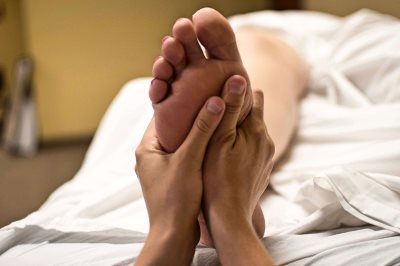
Chronic plantar fasciitis can become an invalidating condition, especially when the patient cannot bear weight on the affected foot. Massage therapy is an excellent form of treatment for those who suffer from chronic plantar fasciitis, as it has been confirmed in this article, which was published on Massage Today.
Once again, myofascial release is presented as a suitable form of treatment for such patients; it can bring the much-desired pain relief, allowing the patient the opportunity of enjoying improved functional abilities. It seems that the regular application of foot massages can actually improve the patient’s ability of taking part in weight-bearing activities (minimal pain or no pain present).
The foot massage does not only act at the level of the plantar fascia but also on the muscles involved in the biomechanics of the foot (for example, the calf muscles). Heat applications are recommended before the actual massage, in order to reduce some of the tension present in the plantar fascia. With regard to the actual techniques being used, you will find that these are the most popular: effleurage, petrissage, hand spreading and fingertip spreading.
In performing such a massage, one will concentrate on the muscles responsible for the plantar flexion but also on the local trigger points. For the intrinsic muscles of the foot, thumb kneading is preferred (Swedish technique). The transverse frictional massage is cited here as well, being recommended as a method to stimulate the faster healing of the plantar fascia. Frictional massage can work on adherences present in the area, improving the overall level of functionality. The author draws attention to the fact that massage therapy delivers the best results, when used in combination with individualized physiotherapy programs.
Massage As Primary Treatment
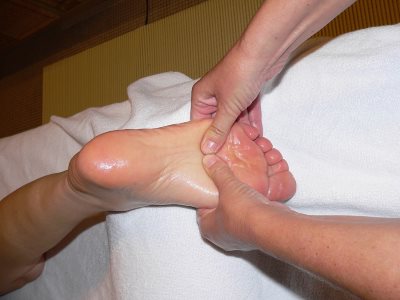
According to a clinical case report published online on RMT, massage therapy can be considered a primary form of treatment for those who have been diagnosed with chronic plantar fasciitis. The foot massage, used in combination with other forms of treatment (passive and active stretching, joint mobilization and hydrotherapy), has improved the range of motion at the level of the affected joints. Moreover, it has allowed the patient to become involved in more complex physical activities, without pain and inflammation affecting the overall functionality.
For the actual massage, Swedish techniques were preferred, including kneading, picking up, wringing and c-scooping. These have been performed not only at the level of the foot but on the entire leg, up to the gluteal muscles (which suggests the deep and extensive involvement of plantar fasciitis). These are known as compensatory structures and they need to be handled as well, otherwise the condition is highly likely to return.
Cyriax Friction Massage
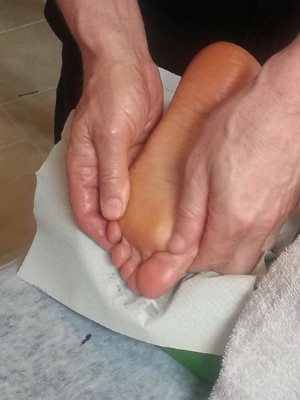
According to a study which was published in the International Journal of Pharma and Bio Sciences, the Cyriax friction massage performed at the level of the foot, in combination with ultrasound applications, can greatly improve the symptomatology of plantar fasciitis. Not only does this combination decreases the pain experienced by the patient but it is also successful in improving the overall functional ability.
The Cyriax massage is based on the concept of deep transverse friction, being able to work on both the pain and inflammation present in plantar fasciitis patients. Moreover, it can work on any adherences and scar tissue that might have developed as a result of chronic inflammation. Performed on a regular basis, it restores the suppleness of the soft tissues and it realigns the subsequent fibers. The deep transverse friction massage is performed at the level of the affected foot, using either the fingertips or the thumb. The transverse application has the additional purpose of stimulating the blood circulation.
This foot massage is recommended to be used in conjunction with ultrasound therapy. This is because ultrasound applications can stimulate the faster healing of the damaged tissues, improving the overall functionality of the patient in question. Moreover, it stimulates the blood circulation at the level of the local tissues and it alleviates the symptoms experienced, particularly the pain and inflammation.
Foot Massage Recommendations & Advice
- Opt for the deep tissue massage, as this ensures the most efficient stretching of the plantar fascia;
- Use massage oil or any other lubricant, in order to increase the efficiency of the massage; however, make sure not to use too much, otherwise it will have exactly the opposite effect (lack of control);
- Massaging the calf muscles is especially important, as these are highly tensed in cases of chronic plantar fasciitis;
- The deep tissue massage can cause a little bit of soreness but this is completely normal, disappearing in a couple of days (broken adherences).
Boot Bomb Recommended Plantar Fasciitis Footwear
- PF Hiking Boots (Mens, Womens)
- PF Hiking Shoes
- PF New Balance Shoes
- PF Walking Shoes
- PF Slippers
- PF Flip Flops
- PF Work Boots
Final word
Foot massages can greatly improve the symptomatology experienced by the patient suffering from plantar fasciitis, whether acute or chronic. They bring the much-desired pain relief and work against inflammatory processes, allowing the patient to resume weight-bearing activities. It is important to concentrate not only on the foot but also on the muscles of the calves and even the thighs; these are compensatory structures and they need to be realigned and de-tensed as well. As you have seen, there are different types of massages that are recommended for plantar fasciitis; each has its own benefits to offer, so you might want to alternate them on a daily basis.
References
http://www.wikihow.com/Treat-Plantar-Fasciitis
http://www.pacificcollege.edu/news/blog/2014/12/05/deep-tissue-massage-plantar-fasciitis
http://physioworks.com.au/injuries-conditions-1/plantar-fasciitis
http://www.integrativehealthcare.org/mt/archives/2005/08/bodywork_techni.html

thank you
You’re welcome!